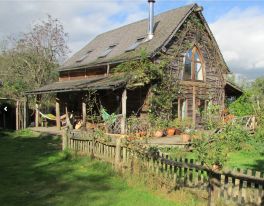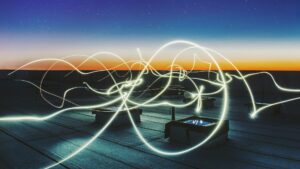Its usually tacitly accepted that we should make our buildings last as long as possible. This makes some sense from an economic perspective; the longer an asset can be useful, the more value can be extracted from the investment. As time goes on, buildings inevitably become less fit for purpose, and they are continually adapted to cater for the needs and preferences of new occupants.
If the Victorians tried to predict our early 21st century needs and preferences when they were building, they were not successful, at least when it comes to comfort and energy. Is it Hubris or arrogance that makes us think that we can design for socio-political, economic, environmental constraints as they will be 100 years from now? Our more developed science certainly gives us a better idea of what the climate will be like than our forebears had, but the variation in possible outcomes is considerable.
Deep energy retrofit is hard, especially, I would argue, in less old buildings. There are good reasons to persevere with our old stock – heritage value, the larger carbon burp of re-build, economics. But I am not alone in arguing that it will be even harder to retrofit the type of houses being built to current regulations and standard practices, in their thousands across the country today. Their moisture-blocking design principles often introduce tricky factors, and their arguably low quality and moderate levels of insulation undermine the economic case.
In the UK and Ireland, we can expect the climate to get warmer (particularly the summer) and wetter (particularly the winter) over the next 100 years, but designing with this in mind is not as common as one might hope. A less technical example is the change in fashion from separated cooking, living and eating spaces typical of buildings more than about 50 years old, to the 21st century trend for more open plan houses. Homeowners are more likely to invest in changing the latter than the former. What we’re really talking about here is locking in bad decisions or at least, contemporaneous ones.
So, perhaps we should be designing buildings for a shorter life span, rather than a longer one, simply to avoid locking decisions in; even those we consider to be good or correct now may prove misguided in 50 years. It should also be acknowledged that ‘designing’ for a particular lifespan a misnomer, like ‘designing’ for a finite airtightness, unless you’re particularly cynical.
Another very important aspect, particularly given the UN’s 12 years (make that 11 and counting) to stay within 1.5°, is embodied carbon, and building lifespan is an essential factor in calculating embodied carbon. I am emphatically not suggesting that it’s a good idea to send to landfill or incinerate everything built to date. What I would say is that embodied carbon is rising rapidly up the agenda, as is design for disassembly, and if we as an industry can get good at these, design for impermanence may, or may not emerge as a useful concept.
There are precedents for this approach, most notably in Japan where house values (as distinct from land values) depreciate such that they are worthless after about 30 years. A specific set of cultural values and economic conditions drive this; land is expensive, but the buildings on them are less valued, in part because, in Alastair Townsend’s words, “Japan fetishizes newness”.

Ben Law’s Woodland House is an example closer to home. The planning authority hedged against this house setting a precedent for building in a sensitive area of greenbelt by applying a condition that the house cannot be sold and must be removed if Ben ceases to manage the woodland. This means the house will only last as long as Ben’s need for this specific home. Happily, the fabric of the building treads very lightly on the earth, being a hyper-local timber frame and straw bale construction.
This reversal of attitude to longevity would mean that the way we build can be continually adapted in a changing climate, social and economic conditions, and bad ideas need not have their repercussions resonate for centuries. As I write this in 2020, design for impermanence is not a good idea, at least not for mainstream deployment. In the absence of widespread effective approaches to minimise embodied carbon and to recover materials and components at the end of life, the carbon and resource depletion implications of this idea are completely unsustainable. But if these pre-conditions are fulfilled, it could become a useful concept in creating, and continually re-creating, a sustainable built environment.





